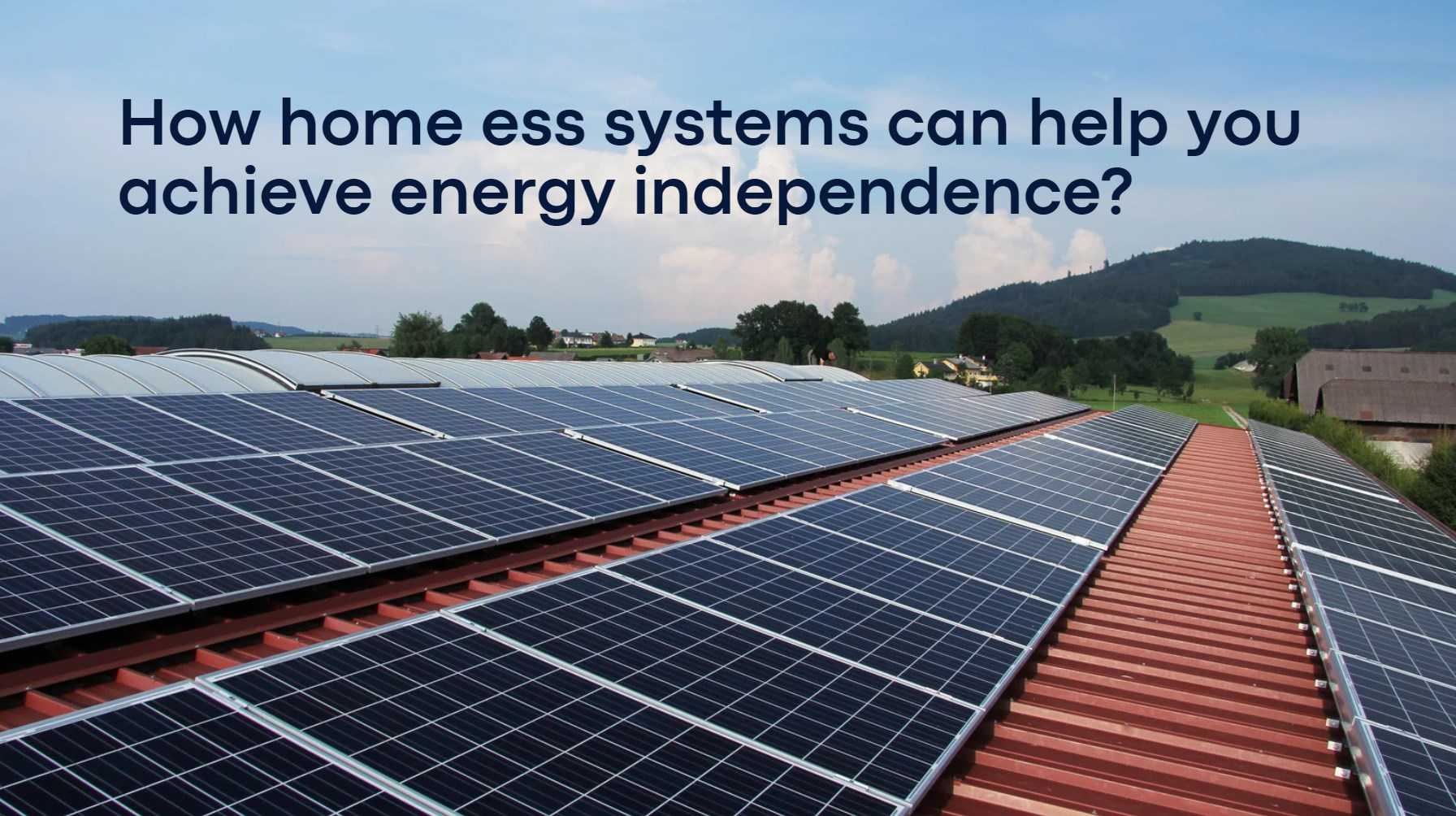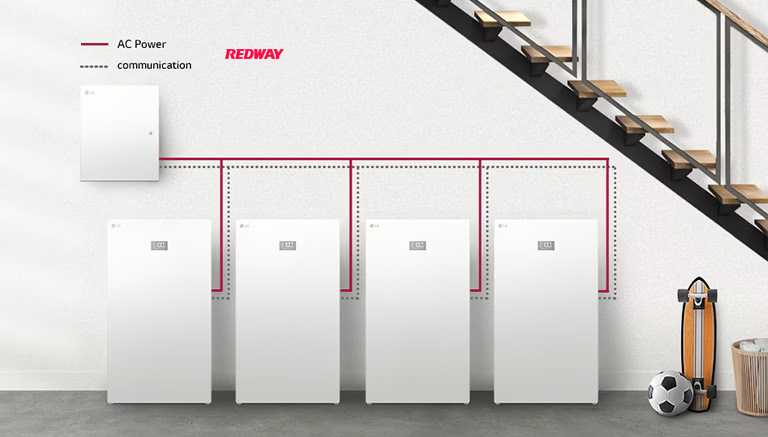Are you tired of relying on traditional energy sources that are both expensive and harmful to the environment? If so, it may be time to consider a home ess system. A home ess system is an innovative solution that allows homeowners to achieve energy independence by storing excess solar power for later use. Not only does this save money on electricity bills, but it also reduces your carbon footprint and helps create a more sustainable future. In this blog post, we’ll explore how home ess systems work, their benefits, and how to choose the right one for your needs. Plus, we’ll share some delicious “home ess recipes” that will make your transition towards renewable energy even more enjoyable!
What is a home ESS system?
-
Charge Voltage: For a 12V LiFePO4 battery, a recommended charge voltage of around 14.4V is commonly suggested. This voltage ensures that the battery receives the appropriate level of charge without risking overcharging or undercharging.
-
Capacity-Based Charging Current: The charging current should be selected based on the capacity rating of the LiFePO4 battery. Matching the charger’s current to the battery’s capacity ensures that the battery receives the optimal charging current for its size, promoting efficient and effective charging.
-
Charger Selection: It is important to choose a charger that matches the capacity of the LiFePO4 battery. This ensures compatibility and allows for the delivery of the recommended charging current. Using a charger that is specifically designed for LiFePO4 batteries further enhances the charging process.
How do home ESS systems work?
-
Energy Storage: Home ESS systems store electricity generated by solar panels or grid power for future use. For solar-powered homes, the excess energy generated during the day is stored in rechargeable batteries. This stored energy can be utilized during the night or when the sun isn’t shining, ensuring a continuous power supply.
-
Backup Power: One of the key advantages of home ESS systems is their ability to provide clean backup power. During power outages, the stored energy in the batteries can be used to power essential appliances and devices, ensuring comfort and convenience even when the grid is down.
-
Grid Optimization: For homes connected to the grid, ESS systems can help optimize energy usage and reduce electricity costs. They store grid-generated power during off-peak hours or when electricity prices are low. This stored energy can then be used during peak hours or when electricity prices are high, reducing reliance on the grid and saving money.
The benefits of having a home ESS system
-
Cost Savings: One of the significant benefits of a home ESS system is the potential for cost savings on energy bills. By utilizing stored energy during peak hours when energy prices are highest, homeowners can reduce their electricity costs significantly. This smart energy management strategy allows for efficient utilization of electricity and maximizes savings.
-
Energy Independence: With a home ESS system, homeowners can achieve energy independence. By reducing reliance on the grid and utilizing stored energy, they become less vulnerable to power outages and fluctuations in energy supply. This increased energy independence provides peace of mind and ensures a continuous power supply, even during emergencies.
-
Environmental Sustainability: Home ESS systems contribute to a greener and more sustainable environment. By utilizing stored energy and reducing reliance on fossil fuel-based electricity, homeowners can reduce their carbon footprint and contribute to the fight against climate change. This eco-friendly approach aligns with the growing global focus on renewable energy and sustainable living practices.
Wholesale lithium golf cart batteries with 10-year life? Check here.
How to choose the right home ESS system for you
-
Power Phase and Voltage: Evaluate whether your home requires a single-phase or three-phase system and choose between high voltage or low voltage options based on your energy requirements and electrical infrastructure.
-
Grid Compatibility: Determine whether the system is designed for on-grid or off-grid use, depending on your location and energy independence goals. Ensure compatibility with your existing grid connection.
-
Battery Capacity and Lifespan: Assess your energy consumption patterns and select a system with an appropriate battery capacity to meet your needs. Consider the expected lifespan of the battery system to ensure long-term performance and value.
-
Appearance and Installation: Take into account the physical design and dimensions of the system to ensure it fits seamlessly into your home environment. Consider the installation model and requirements to ensure a smooth integration process.
-
Professional Certifications: Look for systems that have undergone rigorous testing and obtained relevant certifications to ensure safety, quality, and compliance with industry standards. This provides peace of mind and ensures a reliable and efficient home ESS system.
Home ESS recipes
Home ess systems are not just about helping you achieve energy independence, but they can also be a source of creativity in your household. With the right home ess system, you can create delicious and healthy recipes that are good for both your body and the environment.
One simple recipe to try is homemade granola bars. Using ingredients like oats, nuts, seeds, honey or maple syrup, coconut oil and dried fruits, you can make tasty snacks without relying on store-bought options that often come with excessive packaging.
Want OEM lithium forklift batteries at wholesale prices? Check here.
Another great recipe is solar oven roasted vegetables. Simply chop up your favorite veggies like zucchini, peppers and onions into bite-size pieces and toss them in olive oil with some herbs. Place them in a solar oven for an hour or so until they’re tender yet crispy on the outside.
If you have excess produce from your garden or local farmer’s market, consider making homemade jams or pickles using a water bath canning method. This will allow you to preserve fresh produce while reducing waste at the same time.
With these easy-to-make recipes and more available online, there’s no reason why anyone cannot enjoy delicious meals made possible by their home ess system.
Conclusion
Home energy storage systems are an effective solution for achieving energy independence. With the ability to store excess solar power and use it when needed, you can reduce your reliance on the grid and lower your electricity bills.
When choosing a home ess system, consider factors such as capacity, efficiency, and cost to find one that fits your specific needs. And don’t forget to explore different recipes for maximizing the benefits of using a home ess system.
By investing in a home ess system, you can not only save money but also contribute towards creating a sustainable future by reducing carbon emissions. It’s time we all take steps towards becoming more energy-independent and make our homes eco-friendly!
“Experience Reliable Lithium Iron Phosphate Battery Solutions with Redway Power (ISO9001:2015) – Ideal for RVs, Sightseeing Carts, Marine, Scooters, Tricycles, Emergency Lighting, and Security Monitoring Applications. Our LFP Battery offers Deep Cycle Reliability, High Safety Standards, Long Lifespan, and Excellent Temperature Performance. We specialize in Custom Lithium Battery Solutions for Wholesale and B2B Customers” – This statement emphasizes the supplier’s reputation for delivering high-quality and reliable lithium iron phosphate batteries for various applications, including RVs, marine, and emergency lighting. The supplier is also known for its custom lithium battery solutions, catering to the unique requirements of wholesale and B2B customers.









